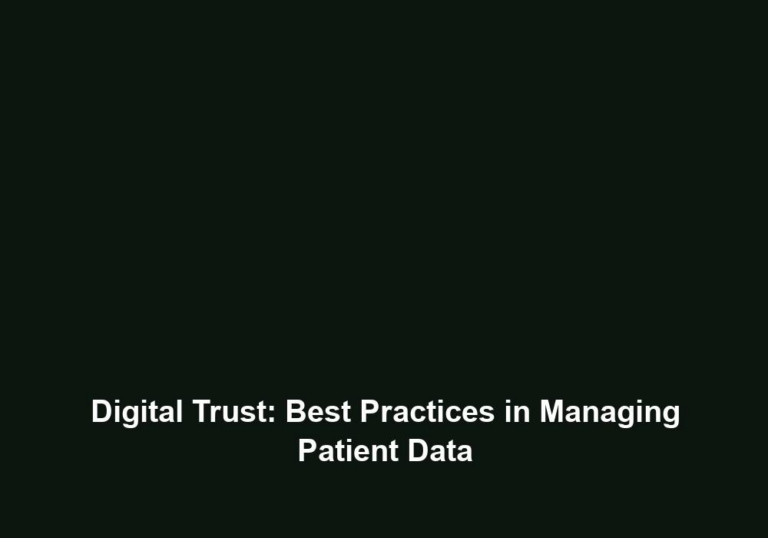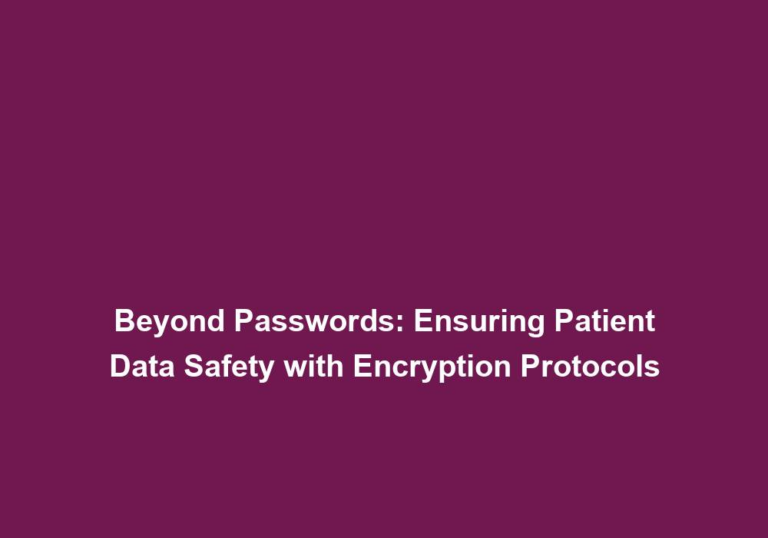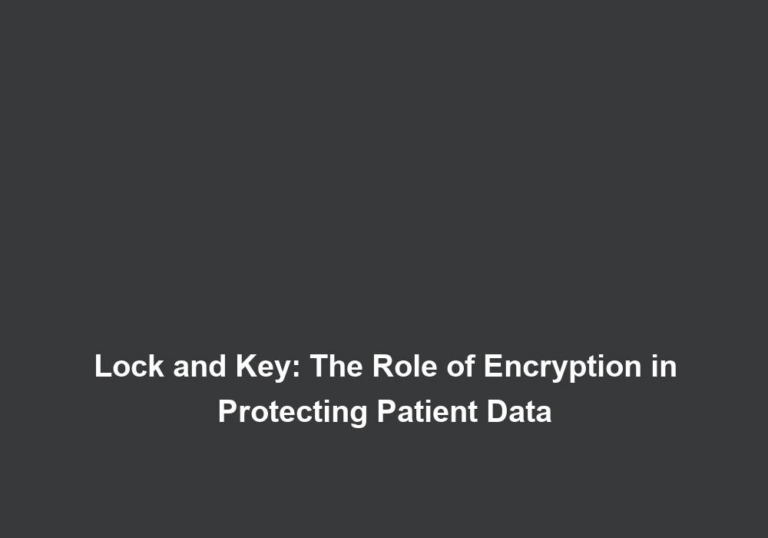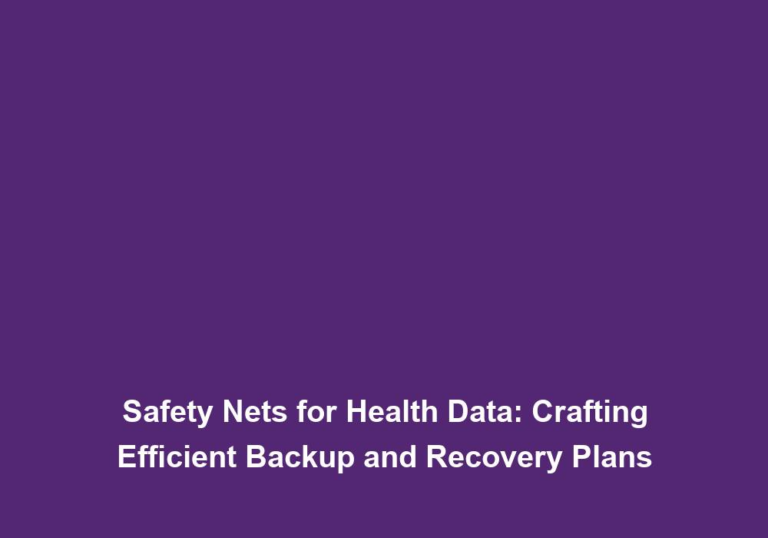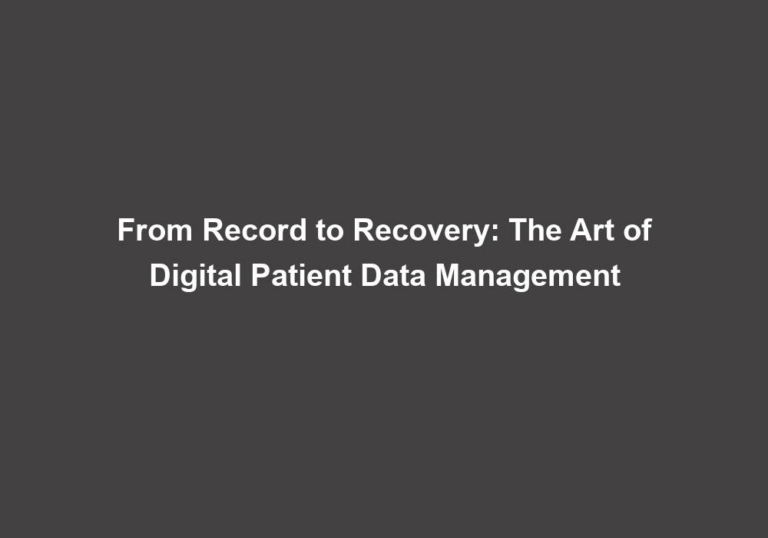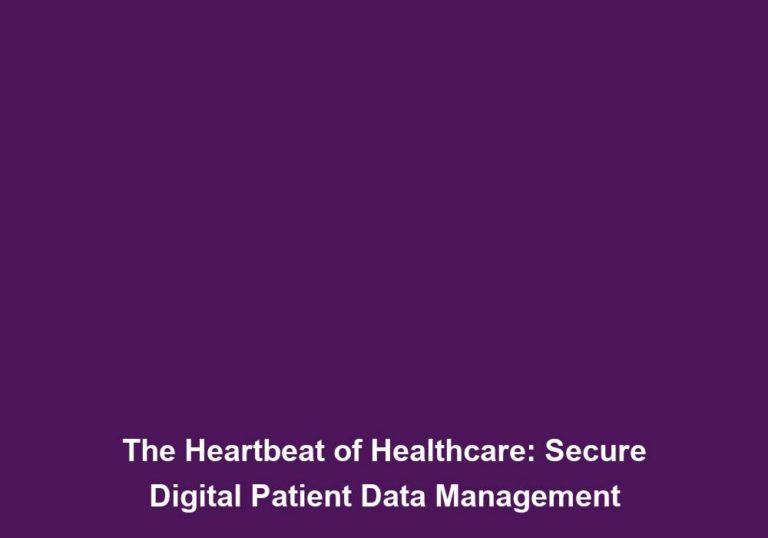Digital Lifelines: The Importance of Backup and Recovery in Healthcare
In today’s digital age, the healthcare industry heavily relies on technology to deliver efficient and effective patient care. Electronic health records (EHRs), telemedicine, medical devices, and various software systems have become invaluable tools for healthcare providers. However, with the increasing reliance on digital systems, the need for robust backup and recovery solutions has become paramount. In this article, we will explore the importance of backup and recovery in healthcare and how it ensures the smooth and uninterrupted functioning of critical healthcare services.
The Vulnerability of Digital Systems in Healthcare
Healthcare organizations generate and store vast amounts of critical data, including patient records, medical imaging files, laboratory results, and treatment plans. These digital lifelines are essential for delivering accurate diagnoses, facilitating treatment decisions, and ensuring patient safety. However, the dependence on digital systems also makes healthcare organizations vulnerable to various risks, such as hardware failures, software glitches, cyber threats, natural disasters, and human errors.
Hardware Failures and Software Glitches
Hardware failures, such as server crashes or storage device malfunctions, can lead to data loss and system downtime. This can have a significant impact on healthcare providers’ ability to access patient information and deliver timely care. Without proper backup and recovery measures in place, healthcare organizations risk losing essential data, compromising patient safety, and experiencing prolonged service disruptions.
To mitigate the risks associated with hardware failures, healthcare organizations should implement robust backup systems that regularly create copies of critical data. These backups should be stored securely and tested periodically to ensure their reliability. By having redundant copies of data, healthcare providers can quickly recover from hardware failures and minimize the impact on patient care.
Similarly, software glitches or bugs can disrupt the functioning of critical applications, hindering healthcare providers’ ability to access patient information and deliver timely care. Regular software updates and patches can help address these issues, but having a backup and recovery strategy in place is crucial. This allows organizations to restore systems to a previous stable state in the event of software glitches, ensuring uninterrupted access to critical healthcare information.
Cyber Threats
The healthcare industry has become an attractive target for cybercriminals due to the vast amounts of sensitive patient data it holds. Ransomware attacks, data breaches, and other cyber threats pose a significant risk to the confidentiality, integrity, and availability of healthcare information systems. In the event of a successful cyber-attack, healthcare organizations can face data encryption, theft, or destruction, leading to operational chaos and potential harm to patients.
To protect against cyber threats, healthcare organizations must implement comprehensive backup and recovery strategies. This includes regular data backups stored in secure offsite locations, encryption of sensitive data, and the use of robust cybersecurity measures. In the event of a cyber-attack, having reliable backup copies enables organizations to restore their systems and data to a pre-attack state, minimizing the impact on patient care and organizational operations.
Natural Disasters
Natural disasters, such as floods, fires, earthquakes, or hurricanes, can cause physical damage to healthcare facilities, including data centers and storage infrastructure. Without proper backup and recovery mechanisms, critical patient data and systems may be lost irretrievably.
To mitigate the risks associated with natural disasters, healthcare organizations should implement offsite backups and disaster recovery solutions. Offsite backups ensure that vital healthcare information is stored in secure locations separate from the primary data center. Additionally, disaster recovery solutions allow for the rapid restoration of systems and data in the event of a physical infrastructure failure. By implementing these measures, healthcare organizations can ensure the preservation and availability of vital healthcare information, even in the face of unpredictable events.
Human Errors
Mistakes are an inherent part of human nature, and even healthcare professionals can inadvertently cause data loss or system failures. Accidental deletion, improper configuration changes, or mishandling of equipment can jeopardize patient data integrity and system stability.
To mitigate the risks associated with human errors, healthcare organizations should establish robust backup and recovery processes. Regular backups and version control ensure that previous data versions can be restored in case of accidental deletion or undesirable changes. Additionally, implementing proper training and protocols for healthcare professionals can help minimize the occurrence of human errors.
The Benefits of Backup and Recovery in Healthcare
Implementing a comprehensive backup and recovery strategy comes with several benefits for healthcare organizations. Let’s explore some of the key advantages:
1. Data Protection and Preservation
Backup and recovery solutions ensure the protection and preservation of critical healthcare data. By regularly backing up data and storing it securely, organizations can guard against data loss due to hardware failures, software glitches, cyber-attacks, natural disasters, or human errors. With proper backup mechanisms in place, healthcare providers can quickly restore lost or corrupted data, minimizing the impact on patient care and organizational operations.
In addition to data protection, backup and recovery solutions also play a crucial role in data preservation. By maintaining redundant copies of data, healthcare organizations can ensure the long-term availability and accessibility of critical healthcare information.
2. Business Continuity
In healthcare, downtime can have severe consequences. A robust backup and recovery strategy ensures business continuity by minimizing system downtime and allowing healthcare providers to quickly resume their essential operations. By having up-to-date backups readily available, organizations can rapidly restore their systems and data, reducing the disruption to patient care and ensuring the continuity of critical healthcare services.
Furthermore, backup and recovery solutions enable healthcare organizations to maintain a high level of operational efficiency. By minimizing downtime, healthcare providers can maximize their productivity and ensure uninterrupted access to critical healthcare information.
3. Compliance and Legal Requirements
Healthcare organizations are bound by strict regulations, such as the Health Insurance Portability and Accountability Act (HIPAA) in the United States, to protect patient data privacy and security. Backup and recovery solutions play a crucial role in meeting these compliance requirements. Having reliable backup copies and disaster recovery plans in place helps organizations demonstrate their commitment to safeguarding patient information, avoiding potential legal and financial penalties.
By implementing backup and recovery solutions, healthcare organizations can ensure that patient data is protected, recoverable, and accessible, in compliance with relevant regulations.
4. Faster Recovery Times
In the event of a system failure, cyber-attack, or data loss incident, quick recovery is of utmost importance in healthcare. Backup and recovery solutions enable healthcare organizations to minimize downtime and recover critical systems and data efficiently. With proper backup mechanisms and disaster recovery plans, healthcare providers can significantly reduce the time needed to restore operations, ensuring uninterrupted patient care and minimizing the potential impact on patient outcomes.
By reducing recovery times, healthcare organizations can minimize the disruption to patient care and ensure that critical healthcare services are restored promptly.
5. Peace of Mind
Implementing robust backup and recovery solutions provides healthcare organizations and stakeholders with peace of mind. Knowing that critical data is protected, recoverable, and available when needed alleviates concerns about potential data loss, system failures, or cyber-attacks. This peace of mind allows healthcare professionals to focus on their primary objective: providing high-quality care to patients.
By investing in reliable backup and recovery solutions, healthcare providers can safeguard their digital lifelines and deliver uninterrupted, high-quality care to their patients.
Conclusion
In today’s technology-driven healthcare landscape, the importance of backup and recovery cannot be overstated. The vulnerability of digital systems to hardware failures, software glitches, cyber threats, natural disasters, and human errors necessitates the implementation of robust backup and recovery strategies. These solutions protect critical healthcare data, ensure business continuity, meet compliance requirements, facilitate faster recovery times, and provide peace of mind to healthcare organizations. By investing in reliable backup and recovery solutions, healthcare providers can safeguard their digital lifelines and deliver uninterrupted, high-quality care to their patients.


